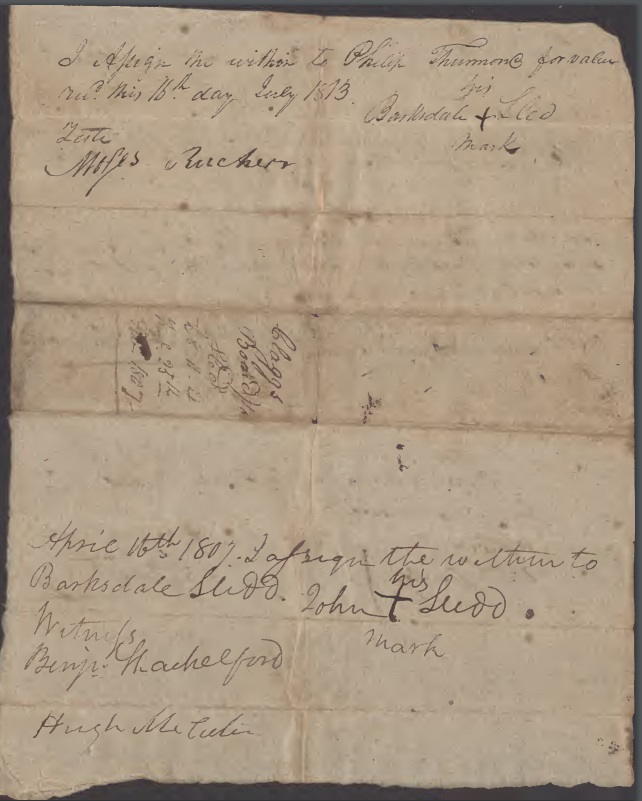The reverse side of the 1807 “bond” from James Clagg to John Sledd contains two assignments in addition to the one signed by Amy Sledd on the day the bond was originally written and signed by Clagg.

James Clagg to John Sledd, bond, 25 February 1807, James Clagg vs. John Sledd Jr., Bedford County, Virginia, Chancery Court; digital image, Library of Virginia, Virginia Memory Collection (Chancery Records), referenced as Bedford County Index Number 1827-013; downloaded 19 June 2018.
John Sledd assigns the bond to Barksdale Sledd on 16 April 1807 and Barksdale Sledd assigns the bond to Philip Thurmond in July of 1813. It is difficult to say why Barksdale Sledd assigned the note to Thurmond, but John Sledd’s April 1807 assignment to Barksdale Sledd appears to be confirming Amy Sledd’s assignment to Barksdale.
There are two things somewhat unusual about Amy Sledd’s assignment of the bond on the day it was originally signed by Clagg.
- Amy Sledd is not mentioned in the bond.
- She is a woman.
Even without any other documentation, Amy’s assignment of the bond indicated a relationship to the other Sledds mentioned in this document. John Sledd (to whom the original bond was made out) confirms her assignment of the bond to Barksdale. This is likely because at some point after Amy made the assignment it was realized that John needed to make it.
What’s interesting is that John’s assignment confirms Amy’s assignment. He does not sign the bond over to anyone else nor does he invalidate Amy’s assignment.
Barksdale’s 1813 assignment to Thurmond could have been for one of several reasons all which likely revolved around needing the money in one way or another.
[Stay tuned–there’s more.]

2 Responses
I have an 1821 legal document where Philip Thurmond as plaintiff has brought an action against, James Bullock, Gate(?) Bullock, Barksdale Sledd and James Dillard, Sheirff of Lynchburg District as defendants. The same guys 14 years later still involved with each other involving money matters.
I think this group of cohorts remained involved with each other for some time. I’m assuming the document you mention is a copy of something from the Library of Virginia website?